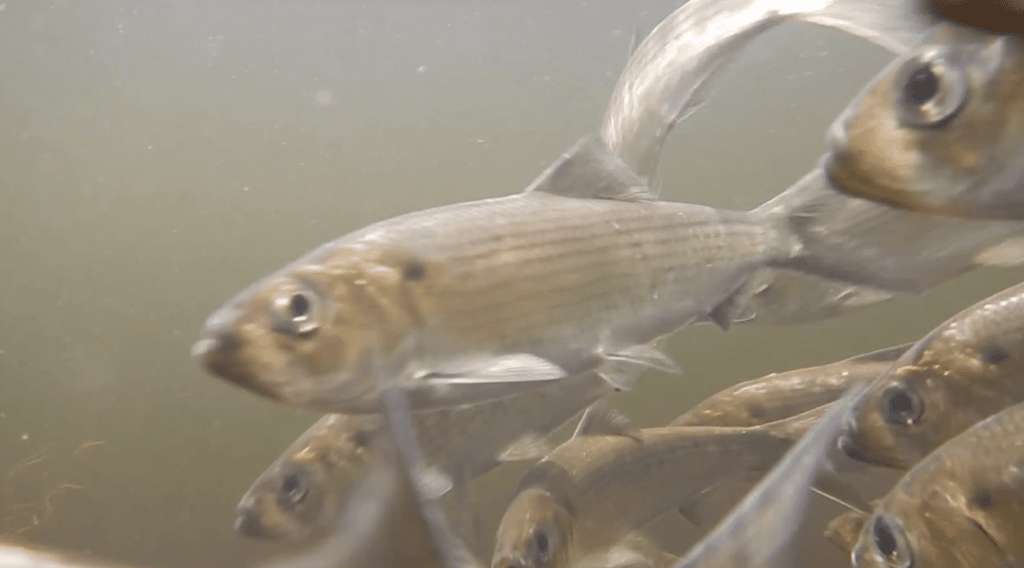
An international phenomenon thousands of years in the making is headed to a coastal river or stream near you. This week, Maine Audubon heralds fish migration—the return of diadromous fish from the ocean to their inland spawning grounds. It starts with elvers, baby American Eels; then soon millions of Alewives (pictured above) will return in schools so large they can be fished by hand in some places; Sea Lampreys and Atlantic Salmon, in the few rivers that still host them, will follow.
For centuries before Maine even existed, Wabanaki people and communities knew to expect the massive international delivery of protein and sustenance which fish migration promised. The forest understory blooms of Amelanchier, or Shadbush, often cued up the seasonal transition from inland forests where game was more abundant in winter to coastal settlements. The abundance of fish returning to spawn provided sustainable nourishment for people, and also some of the first fertilizer for crops, started from seeds, at this time of year.
This week, Maine Audubon will feature both Western science and indigenous ecological knowledge in programs related to conserving Maine’s sea run fish and their spawning habitat. We’ll virtually visit the federal salmon hatchery at Craig Brook to learn about technology being used to breed fish and retain genetic connections to spawning sites. We’ll hear from a founder of a Passamaqoddy group of modern Water Protectors similarly committed to restoring historic salmon runs, particularly in the St. Croix watershed. We’ll also highlight salmon in family programs such as Family Trivia and Read & Ramble this week.
We also encourage you to see fish migration for yourself this year. Our friends at Maine Rivers have updated their Maine Alewife Trail brochure for 2022. There you will find great information and a map of Maine’s entire coast with locations to access and witness this incredible phenomenon. While some of these sites are pristine streams, others are concrete places where human-made passages enable fish to swim around dams. In many of these sites, you may see other animals such as Ospreys, Bald Eagles, and River Otters also attracted to the abundance of prey.

In a few short weeks, all third graders in Portland and hundreds of other students throughout Maine who have been rearing endangered Atlantic Salmon in their classrooms as part of the Fish Friends program will say farewell to their young fry. The pink eggs that they received back in February eventually sprouted heads and tails, absorbed the egg sack into their bodies, and developed the strong swimming skills they’ll need to spend a summer surviving and growing in their ancestral stream, in which they will be released in mid-May. In the fall, these fish will be drawn to the sea. If all goes according to nature’s plan, these fish will return to Maine as spawning adults to contribute to ecosystems which humans and other animals have depended on for ten thousand years.
